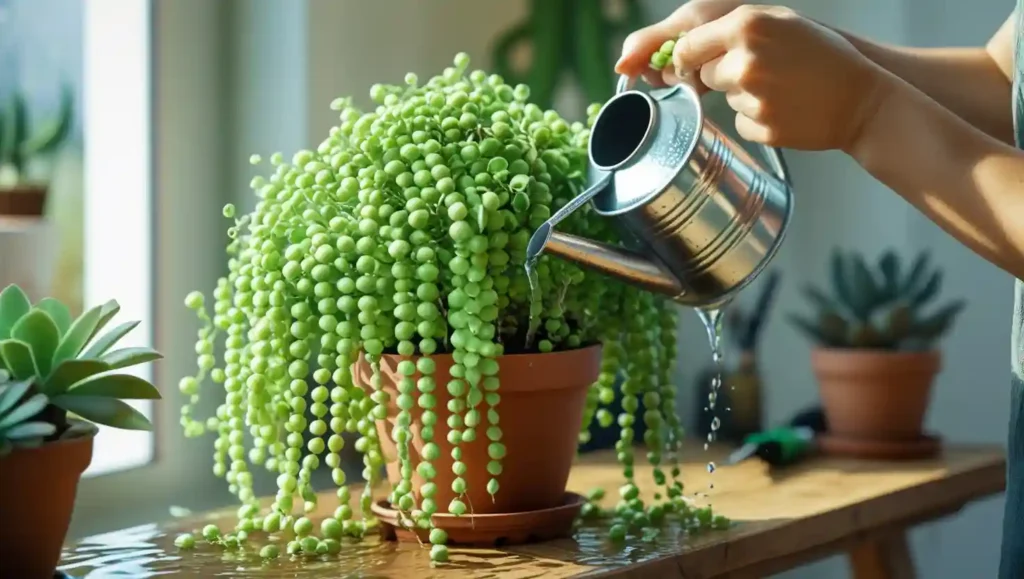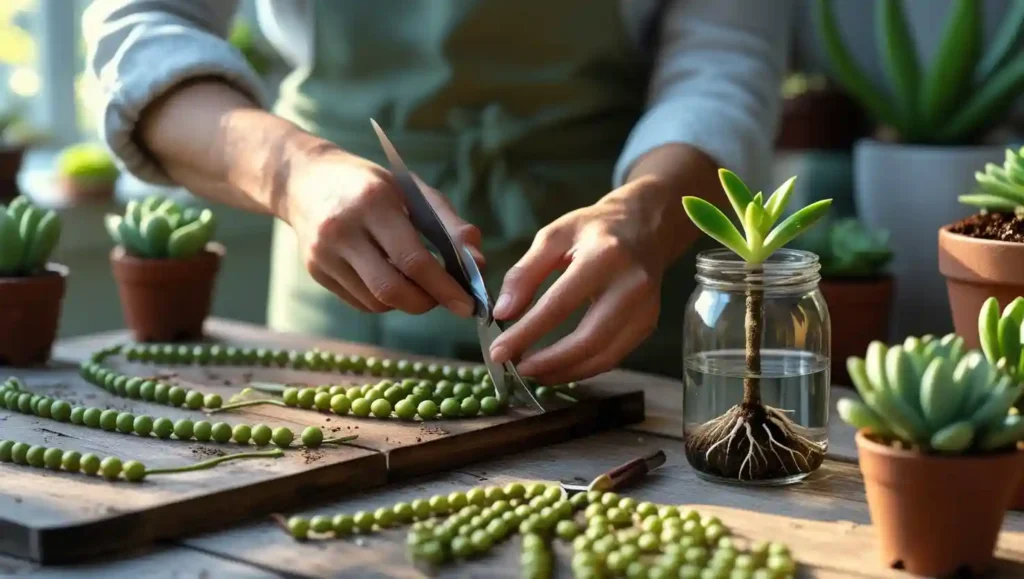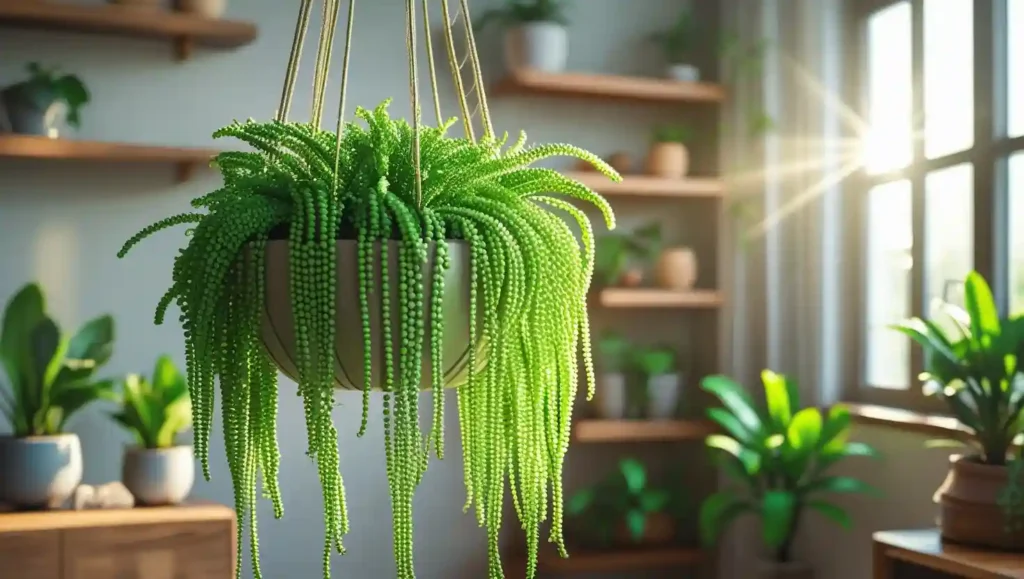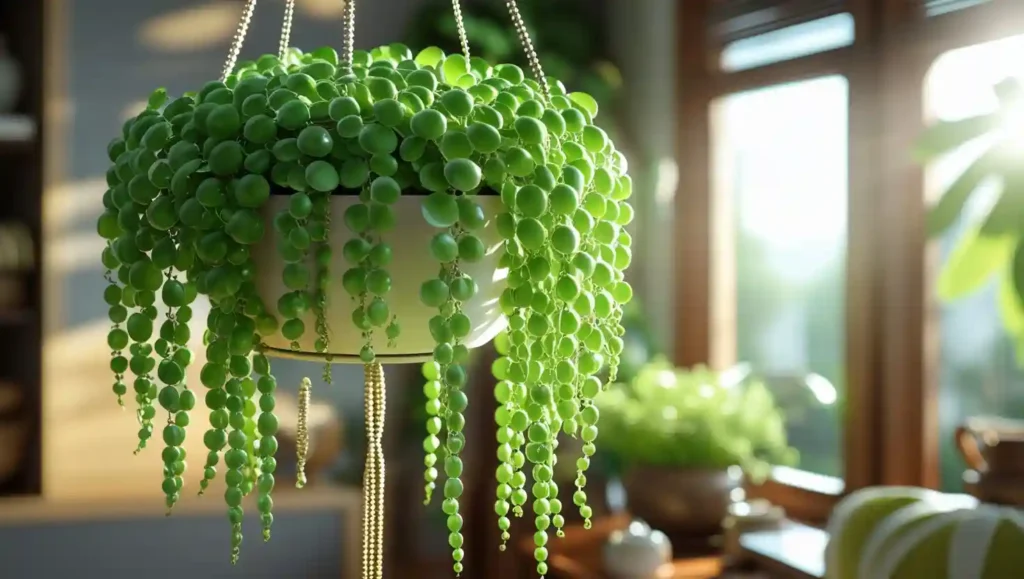The rosary plant, called String of Beads or String of Pearls (Senecio rowleyanus) is a stunning trailing succulent that is admired by its distinctive bead-like leaves. This plant is a beautiful accent to both outdoor and indoor areas, making it a popular choice for plant lovers. If properly cared for the rosary can flourish for years, generating the swaying greenery that add a natural appeal to any environment.
In this article, we’ll look into everything you need to learn about the rosary plant, including its history and care, techniques for propagation, common issues and the benefits. No matter if you’re a novice or an experienced gardener this article will guide you on how to create a vibrant and healthy rosary plant easily.
1. Understanding the Rosary Plant
The rosary plant is part of the Asteraceae family and is native to South Africa. The plant thrives under dry and desert conditions and is suitable to be used in hangers, hanging baskets or as a trailing accent for gardens. The name of the plant comes because of its tiny round leaves that look like beads strung together as a Rosary. These supple, water-holding leaves enable the rosary plant in dry, drought-prone areas.
One of the distinctive features of the rosary plant is its speedy expansion. In the right conditions its trailing stems could be several feet long which makes it a great choice for vertical garden and indoor decor.
2. How to Care for a Rosary Plant

2.1 Light Requirements
The rosary plant thrives in indirect, bright sunlight. If it is grown indoors, put it in a bright window, where it gets at least 4-6 hours of filtering sunlight each day. A lot of direct sunlight could burn the delicate leaves and insufficient light can cause the growth to be sluggish. If sunlight isn’t abundant then you should consider using a growth light to meet its requirements.
2.2 Watering Needs
As it is succulent the rosary plant needs very little irrigation. Insufficient watering can cause root rot which is a common problem with this species. The ideal time to water is to let the soil dry completely between irrigations. In summer, a watering schedule of once each two weeks will be enough for winter. In winter, limit watering to once per month. Make sure to use a draining pot to prevent excessive moisture buildup.
2.3 Soil and Potting Mix
The rosary plant is most productive in a well-draining succulent, or mix of cactus. It is also possible to create your own soil mixture using regular pot mix with perlite and sand for better drainage. Terracotta pots are the ideal choice, as it will help remove excess moisture and reduce the chance of watering too much.
2.4 Temperature and Humidity
The rosary plant is a fan of warm temperatures between 65 and 80degF (18-27degC). It’s not frost-tolerant, and must be kept inside in winter. If you live in a colder climate, make sure that your plant is located in a sunny, protected place. It is a great choice for dry climates and does not require a lot of humidity, which makes it a plant that is easy to maintain.
2.5 Fertilizing the Rosary Plant
Fertilization promotes healthy growth for the rosary plant. Apply dilute liquid succulent fertilizer at least each month, during the growth season (spring as well as summer). Avoid fertilizing during winter and fall, since the plant goes into dormancy in these months.
3. How to Propagate a Rosary Plant

Propagation is a simple and efficient method to increase the number of your rosary plant. Here’s a step-by step guide to the propagation process for this stunning succulent:
3.1 Stem Cuttings Method
- Choose a Healthy Stem: Select a healthy, long stem from the mother plant. Ensure it has at least a few nodes and leaves.
- Cut the Stem: Using clean scissors, cut a 4-6 inch segment of the stem.
- Let It Dry: Allow the cutting to dry for a day or two to form a callus.
- Plant in Soil: Place the dried cutting into a well-draining potting mix. Gently press the stem into the soil without burying the leaves.
- Water Sparingly: Water lightly and keep the soil slightly moist until roots develop.
In a couple of weeks, the rosary plant cutting will start to establish roots and develop into a fully-grown plant.
3.2 Water Propagation Method
You can also propagate the this plant by water. Place the stems in a glass jar and ensure that all nodes have been submerged. When roots begin to appear, move it to a pot that is filled with soil.
4. Common Problems and Solutions
Although it is a low-maintenance plant The rosary plant could have some issues that are common to all plants. Here’s how you can address these issues:
4.1 Overwatering and Root Rot
- Signs: Yellowing leaves, mushy stems, and a foul smell from the soil.
- Solution: Reduce watering and ensure the pot has proper drainage. If root rot is severe, take healthy cuttings and propagate a new plant.
4.2 Leggy Growth
- Signs: Long, stretched-out stems with sparse leaves.
- Solution: Provide more sunlight and occasionally prune to encourage bushier growth.
4.3 Pest Infestations
- Signs: Small webs, sticky residue, or tiny insects on the leaves.
- Solution: Treat the plant with neem oil or insecticidal soap to remove pests like spider mites and mealybugs.
4.4 Shriveling Leaves
- Signs: Wrinkled or shriveled beads.
- Solution: Increase watering slightly, but avoid overwatering. Check for root damage and repot if necessary.
5. Benefits of Growing a Rosary Plant

5.1 Aesthetic Appeal
The rosary plant is a distinctive and elegant accent to any outdoor or indoor space. Its stems are ideal for hanging shelves, planters, and windowsills.
5.2 Low Maintenance
A drought-tolerant succulent, this plant requires little maintenance, which makes it perfect for novices and busy plant owners.
5.3 Air Purification
Like other succulents, this plant improves indoor air quality through absorption of carbon dioxide as well as releasing oxygen.
5.4 Easy Propagation
The rosary plant is one of the most simple plants to propagate, which allows you to make multiple plants with a single stem cutting.
6. Conclusion

This plant is a beautiful and low-maintenance succulent which adds an element of green to any garden or home. With the right care it will thrive over time, resulting in stunning cascading effects which enhances any room. No matter if you’re a novice or a seasoned plant enthusiast The rosary plant is a must for your collection.
By following the maintenance tips that are provided in this guide to ensure that your plants are healthy and vibrant. It will also be alive. Begin to grow your own rosary plant now and take pleasure in the beautiful beauty of this amazing succulent!
